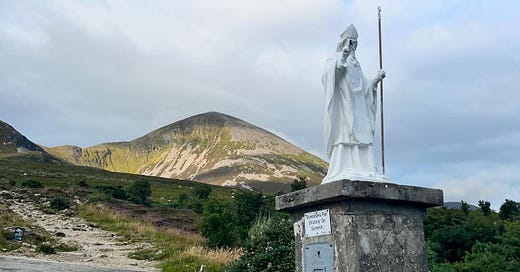Lúnasa: Harvest knots and barefoot climbs
journeys to holy places, a sos of sorts after which a return to daily life
Keep reading with a 7-day free trial
Subscribe to A Letter: A Running Stitch to keep reading this post and get 7 days of free access to the full post archives.




